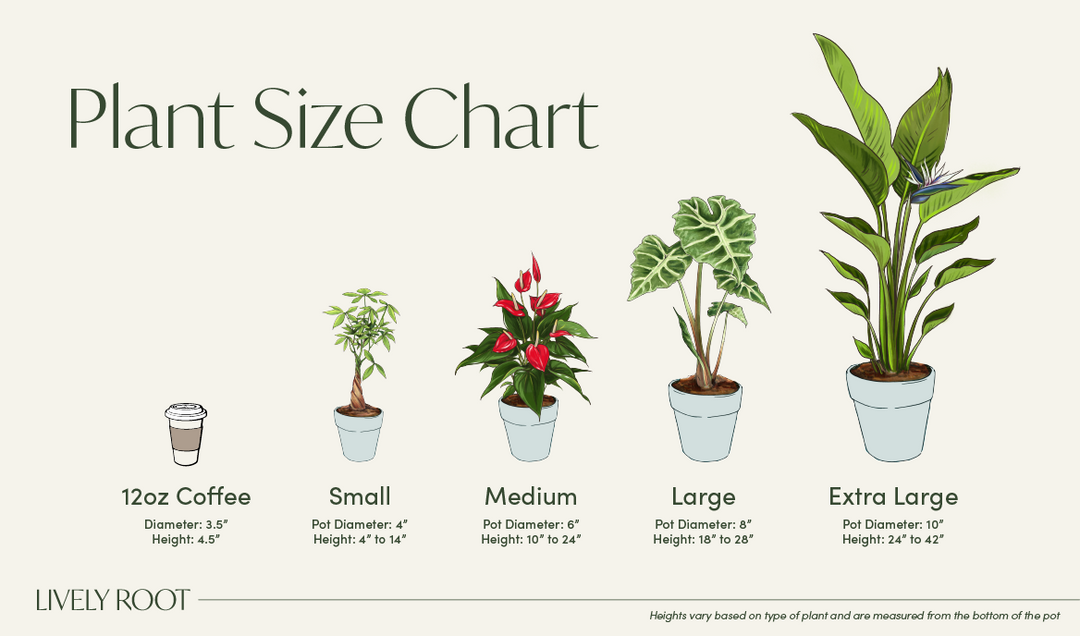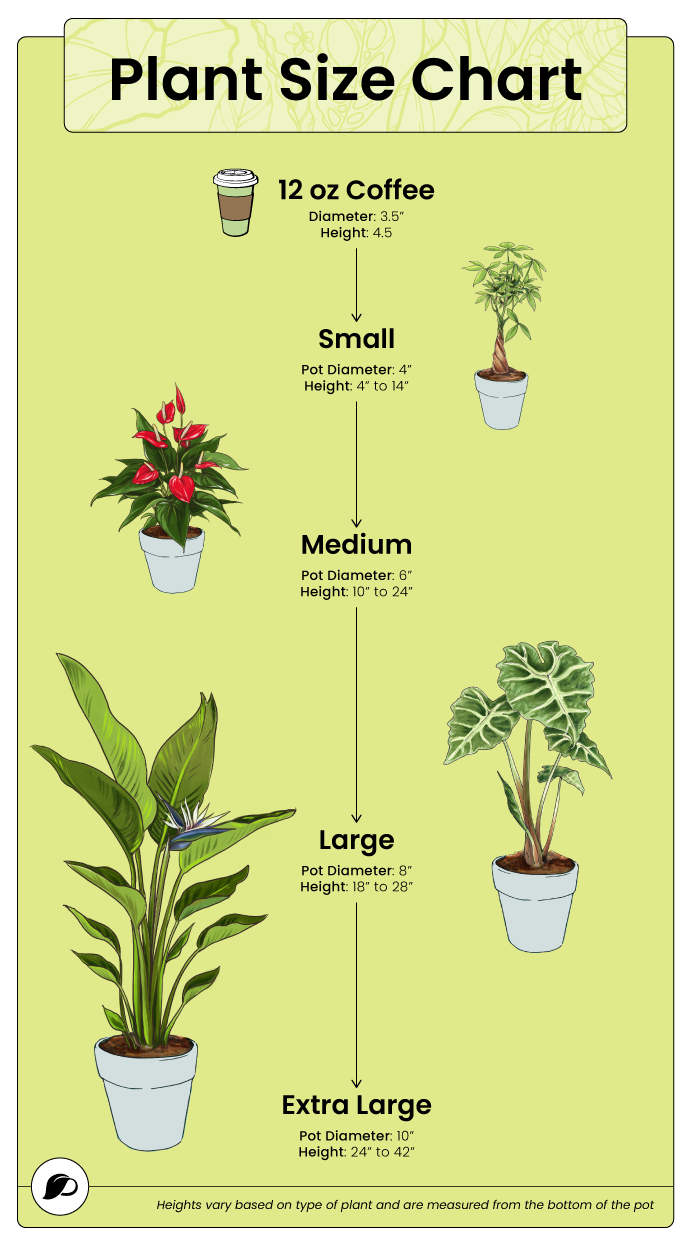Medium to bright indirect light. Never direct sunlight.
Monstera Plant (Deliciosa) Care Guide & Presentation

Monstera Plant: Overview
The Split Leaf Philodendron (Monstera deliciosa) is a striking tropical plant with vibrant, large leaves that sport distinctive splits and holes known as fenestrations. Adaptation to wind and jungle rainfall probably gave the Monstera plant its split leaf structure. This beauty comes from the tropical rainforests of Central America and Mexico. A popular indoor houseplant worldwide, the Monstera deliciosa can grow as a porch plant in hardiness zones 8-11 as long as night temperatures stay above 50°F. When grown outdoors, it can flower and even occasionally produce edible fruit.
The Monstera deliciosa plant belongs to the Araceae family, including distant relatives like the Peace Lily, ZZ plant, and different types of Syngonium. The oxalate crystals contained in Monstera’s leaves and stems make it toxic to pets when ingested. Monsteras have a preference for bright, filtered light, resembling their growing conditions under the canopy of their native rainforests.
These large, beautiful plants require extra care, but they’re worth the effort! Not only do these stunning plants have great aesthetic appeal, but they are also known for their powerful air-purifying properties, cleansing your home from air-borne toxins. These plants symbolize honor and endurance. They can also bring harmony to your home, according to Feng Shui.
Split Leaf Philodendron Alternative Names
- Ceriman
- Cutleaf Philodendron
- Hurricane Plant
- Mexican Breadfruit
- Swiss Cheese Plant
Monstera Deliciosa Benefits
- Improves indoor air quality
- Its popularity and aesthetic appeal make it a great gift plant
- Attracts positive energy into your home
- An eye-catching, statement plant, due to its vibrant large foliage
- Acts as a natural air humidifier
Split Leaf Philodendron (Monstera Deliciosa): Care Guide
This large and visually impressive plant requires extra care to thrive in your home. By following our Split Leaf Philodendron care tips, your plant will get all it needs to flourish.
Watering and Humidity
The Monstera Philodendron appreciates slightly moist soil. Just make sure it doesn’t get soggy. In addition, ensure that your Split Leaf Philodendron gets sufficient humidity, as dry air can cause its leaves to go crisp and brown at the tips.
Light and Temperature
The Monstera Split Leaf Philodendron grows best when it receives six hours of medium to bright, indirect light daily. As a tropical plant, it prefers warm temperatures, ranging from 65℉ to 90℉.
Soil, Repotting, and Fertilizing
When you get a Monstera deliciosa for sale, don’t repot it immediately. It’s best to transplant it in spring, using a pot about 2 inches larger than the old one. Use a well-draining potting soil mixed in with perlite to improve drainage. Feed your Monstera with a balanced liquid fertilizer diluted at half strength every 2-3 weeks during the growing season.
Propagation
If you decide to propagate your Monstera plant, use cuttings trimmed just below an aerial root. You can easily root the cuttings in both water and soil. More seasoned gardeners also use air-layering. Remember to wear gardening gloves when handling your Monstera deliciosa Split Leaf Philodendron, as its sap can cause skin irritation.
Pruning, Cleaning, and Common Issues
A large Split Leaf Philodendron requires support to prevent the stems from breaking. You can train it to grow up a moss pole, for instance. If you notice any damaged leaves on your plant, prune them off. For the best Monstera deliciosa care, wipe the plant’s leaves with a damp soft cloth once in a while to remove accumulated dust, which can hinder photosynthesis. Other common issues to watch out for are yellowing or browning leaves. There’s a variety of reasons behind this, including pests, overwatering, or exposure to low light conditions.
Monstera Deliciosa: Placement, Companion & Alternative Plants
The Split-leaf Philodendron is a beautiful plant to have in your home. Whether you want it to be the centerpiece of your living room or to grow it as part of your home jungle, here are some tips to consider:
Best Locations & Uses
- Perfect for humid regions
- A wonderful choice for plant lovers with no pets
- Ideal for experienced indoor gardeners
- A perfect bathroom plant that can grow in spaces with medium light and high humidity
- Spectacular porch plant for warmer climates
Companion Plants
You can group your Split Leaf Monstera with other large plants to create an impressive green oasis at home. And why not add some flowering plants to your green display for a colorful and lush effect?
- Giant Bird of Paradise (Strelitzia nicolai): The stunning Giant Bird of Paradise has a commanding presence, showing off its huge leaves and intriguing white-blue flowers.
- Burgundy Rubber Tree (Ficus robusta 'Burgundy'): The gorgeous Burgundy Rubber Tree has leathery, thick leaves that are at first Burgundy red and unfurl into a deep, dark green color.
- Fiddle Leaf Fig Tree (Ficus lyrata): Trendy in interior design, the Fiddle Leaf Fig Tree is an easy-to-recognize ficus variety because of its unusual, violin-shaped leaves.
Alternative Plants
The gorgeous Philodendron Monstera contains toxic sap, making it unsuitable for pet owners. Here’s a selection of similar pet-friendly plants if you want to choose a pet-safe alternative:
- Money Tree Plant (Pachira aquatica): Famous as a lucky Feng Shui plant, the Money Tree Plant is both pet-safe and easy-going.
- Lady Palm (Rhapis excelsa): A lovely plant with an unmistakable tropical flair, the Lady Palm is pet-friendly and has remarkable air-purifying properties.
- Coconut Palm (Cocos nucifera): The slow-growing Coconut Palm is an exceptional pet-safe palm tree that not only fills your home with a tropical vibrancy but also produces edible nuts.
Get Monstera Deliciosa From LivelyRoot Today
Embrace the mystery of the tropics by choosing a stunning Split Leaf Philodendron for sale from Lively Root!
Customer Reviews
Follow us @livelyroot & show us your #livelyroot plants

